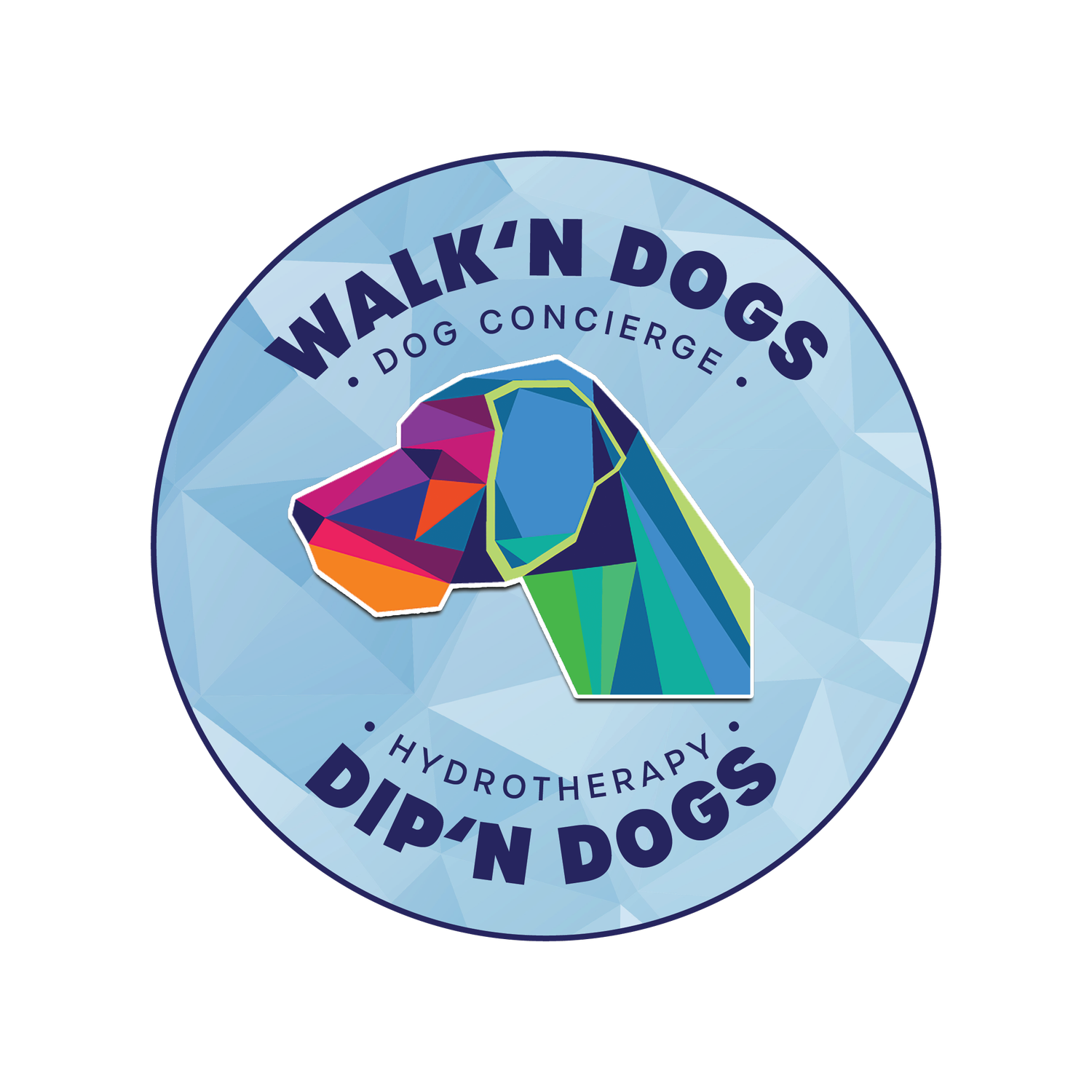How Canine Hydrotherapy Helps Dogs with Luxating Patella
A luxating patella—commonly called a “floating kneecap”—is one of the most frequent orthopedic conditions seen in dogs. While it can affect dogs of any size, it is especially common in small breeds like Chihuahuas, Pomeranians, and Yorkies, as well as certain larger breeds that are genetically predisposed.
This condition can range from mildly inconvenient to severely debilitating, and if left untreated, it can lead to chronic pain, arthritis, and reduced mobility. Fortunately, canine hydrotherapy offers a safe, low-impact way to strengthen supporting muscles, improve joint stability, and enhance overall mobility for dogs with a luxating patella.
At Dip’n Dogs Canine Swimming, we’ve seen first-hand how swimming in a controlled, therapeutic environment can help dogs regain strength, build confidence, and stay active—without the strain that comes with land-based exercise.
In this blog, we’ll cover:
What a luxating patella is and how it affects dogs
Signs and symptoms to watch for
How canine hydrotherapy supports recovery and mobility
What to expect from hydrotherapy sessions at Dip’n Dogs
Why early intervention matters
Understanding Luxating Patella in Dogs
A luxating patella occurs when the kneecap (patella) shifts out of its normal position within the groove of the thigh bone. This displacement can happen intermittently or become a chronic problem.
Veterinarians grade the condition on a scale from 1 to 4:
Grade 1: Patella can be manually moved out of place but returns to normal position on its own.
Grade 2: Patella dislocates during movement but can return to normal with flexion or extension of the knee.
Grade 3: Patella remains out of place most of the time but can be manually repositioned.
Grade 4: Patella is permanently dislocated and cannot be repositioned without surgery.
While some mild cases may not require surgical intervention, all grades benefit from targeted physical therapy—particularly exercises that strengthen the muscles around the knee joint and improve overall limb alignment.
Symptoms of Luxating Patella
The severity and frequency of symptoms vary, but common signs include:
Intermittent skipping or hopping on one leg
Sudden lameness in the rear leg
Kicking the leg backward to “pop” the kneecap back into place
Stiffness after resting or sleeping
Reluctance to run, jump, or climb stairs
Pain or sensitivity when the knee is touched
If you notice any of these signs, it’s important to seek veterinary guidance. Early diagnosis can prevent worsening joint instability and the development of secondary conditions like arthritis.
Why Hydrotherapy Is Ideal for Luxating Patella
One of the biggest challenges in managing luxating patella is finding an exercise method that strengthens the leg muscles without putting excess strain on the joint. This is where canine hydrotherapy truly shines.
1. Low-Impact Strengthening
In water, your dog’s body weight is supported, drastically reducing the impact on the knee joint. This allows your dog to move freely and exercise without pain or risk of injury.
2. Improves Muscle Tone Around the Knee
The primary stabilizers of the kneecap are the quadriceps, hamstrings, and hip muscles. Swimming engages all of these muscle groups, helping to strengthen the joint and reduce the risk of future luxation.
3. Enhances Range of Motion
Controlled swimming movements keep the knee joint in motion, helping maintain flexibility and preventing stiffness—both crucial for dogs recovering from or managing this condition.
4. Supports Post-Surgical Recovery
If your dog has undergone corrective surgery for luxating patella, hydrotherapy can be an important part of rehabilitation, helping restore normal movement patterns while preventing muscle loss during recovery.
5. Builds Overall Fitness Without Overloading Joints
Maintaining a healthy weight is essential for dogs with joint problems. Hydrotherapy provides excellent cardiovascular exercise without the pounding effect of land activities like running or jumping.
What to Expect at a Hydrotherapy Session for Luxating Patella
At Dip’n Dogs Canine Swimming, every hydrotherapy session is designed around your dog’s unique needs, comfort level, and mobility.
A typical session for a dog with a luxating patella may include:
Gentle, guided swimming: Encouraging even use of both hind legs.
Targeted muscle engagement: Using buoyancy aids to focus on specific muscle groups.
Warm water therapy: Our pool helps relax muscles and increase blood flow to promote healing.
Short, controlled swim intervals: Preventing fatigue while maximizing muscle engagement.
Safety-first environment: Our pool features safe entry and exit options, flotation devices if needed, and a trained hydrotherapist who stays with your dog at all times.
For post-surgical dogs, we can coordinate with your veterinarian to ensure that the swimming program complements their recovery plan.
Early Intervention: The Key to Long-Term Mobility
One of the most important things you can do for a dog with a luxating patella is to start supportive care as soon as possible. Even in mild cases, regular hydrotherapy can strengthen muscles, improve stability, and reduce the likelihood of worsening symptoms over time.
Waiting until the condition progresses often means more invasive treatments—and a longer road to recovery. By incorporating hydrotherapy early, you can help your dog maintain an active, happy lifestyle for years to come.
The Dip’n Dogs Difference
We are proud to offer Central Florida’s dogs a professional, safe, and welcoming space to enjoy hydrotherapy-our mission is to help every dog live their healthiest, happiest life, one swim at a time.
Whether your dog is managing a mild luxating patella or recovering from surgery, our experience can help you to create a program/plan that supports healing, mobility, and quality of life.
Give Your Dog the Gift of Movement
If your dog has been diagnosed with a luxating patella, don’t let the condition limit their joy of movement. Contact us today to schedule a hydrotherapy session and see how water can make all the difference.

